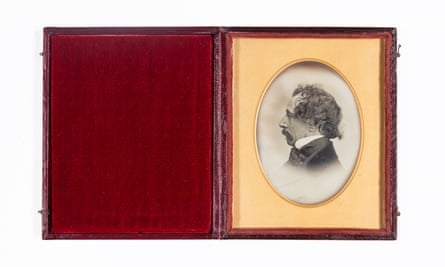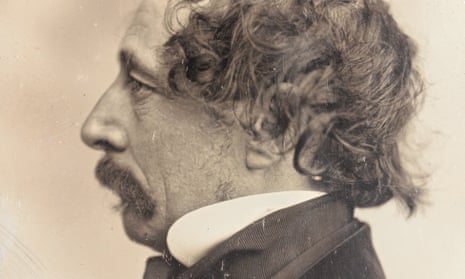Summon up an image of Charles Dickens, and his luxuriant “doorknocker” beard will be one of the first things to come to mind. But an “extremely rare” portrait of the author, depicting the “glorious” moustache he sported for few years only, is set to show his more dapper side.
Dickens is thought to have first experimented with a moustache in 1844, and seems to have been immensely pleased with the new look. “The moustaches are glorious, glorious. I have cut them shorter, and trimmed them a little at the ends to improve their shape,” he wrote to his friend, the artist Daniel Maclise. “They are charming, charming. Without them, life would be a blank.”
Later, on discovering that his brother Fred had also become moustachioed, Dickens wrote to his wife, Catherine: “He has a moustache … I feel (as the Stage Villains say) that either he or I must fall. Earth will not hold us both.”

A sharp, detailed daguerreotype profile portrait of Dickens sporting his moustache was made in around 1852-55, when he was writing Bleak House and Hard Times. It was donated to the Charles Dickens Museum in London by a private collector last year, and the museum has put it on display for the first time, until 31 March, limiting the time it is shown to ensure its conservation. The image had previously been in the private collection for 20 years, after it was rediscovered in the collection of a reclusive Irish photography enthusiast, Charles Cloney.
Emily Smith, the museum’s curator, said the portrait was “extremely rare”. “A moustachioed Dickens is hard to find,” she said. “While his bearded visage in instantly recognisable, Dickens’s early experiments with face furniture are far less well recorded and evidence is scarce. Dickens was image-conscious, definitely a dandy; his public image was carefully crafted and presented and portrait sittings, though not always enjoyed, were not taken lightly.”
Not everyone was impressed by the author’s new look, however. According to British Library curator Andrea Lloyd, Dickens’s friend John Forster described the moustache as a “hideous disfigurement”, and delayed a portrait of the author that he had commissioned because of it.
The moustache, however, developed: by 1853, Dickens had added a “Newgate Fringe”, or hair under the chin. Travelling in Italy with Wilkie Collins, author of The Woman in White and The Moonstone, the pair entered a facial hair-growing competition. Dickens wrote to his wife Catherine: “You remember how the corners of his mouth go down, and how he looks through his spectacles and manages his legs. I don’t know how it is, but the moustache is a horrible aggravation of all this. He smooths it down over his mouth, in imitation of the present great Original.”
By 1858, it had mushroomed into the full beard he is known for today – something which friends feared aged Dickens. But the author said it “saved him the trouble of shaving, and much as he admired his own appearance before he allowed his beard to grow, he admired it much more now, and never neglected, when an opportunity offered, to gaze his fill at himself”.
The Charles Dickens Museum’s daguerreotype was made by John Jabez Edwin Mayall at his 224 Regent Street studio. His technique involved covering the centre of the image with “blackened zinc” before exposing the whole image to light, which wiped out all details except for those protected by the zinc. “The technique produced highly detailed images,” said the Charles Dickens Museum, which is at 48 Doughty Street, Dickens’s only surviving London house. “In the Mayall portrait, Dickens’s tousled hair, broad moustache and the individual lines around his eyes and mouth and on his forehead are vividly reproduced.”
Writing to his friend, philanthropist Angela Burdett-Coutts, in 1852, Dickens spoke of how he had sat for a portrait with Mayall, saying that “I am disposed to think the portrait, by far the best specimen of anything that way, I have ever seen.”
